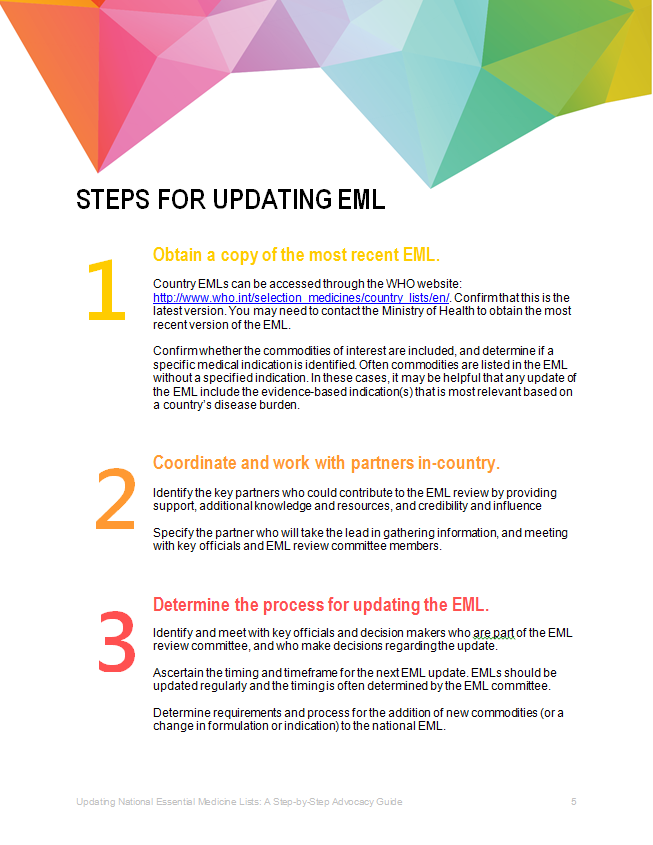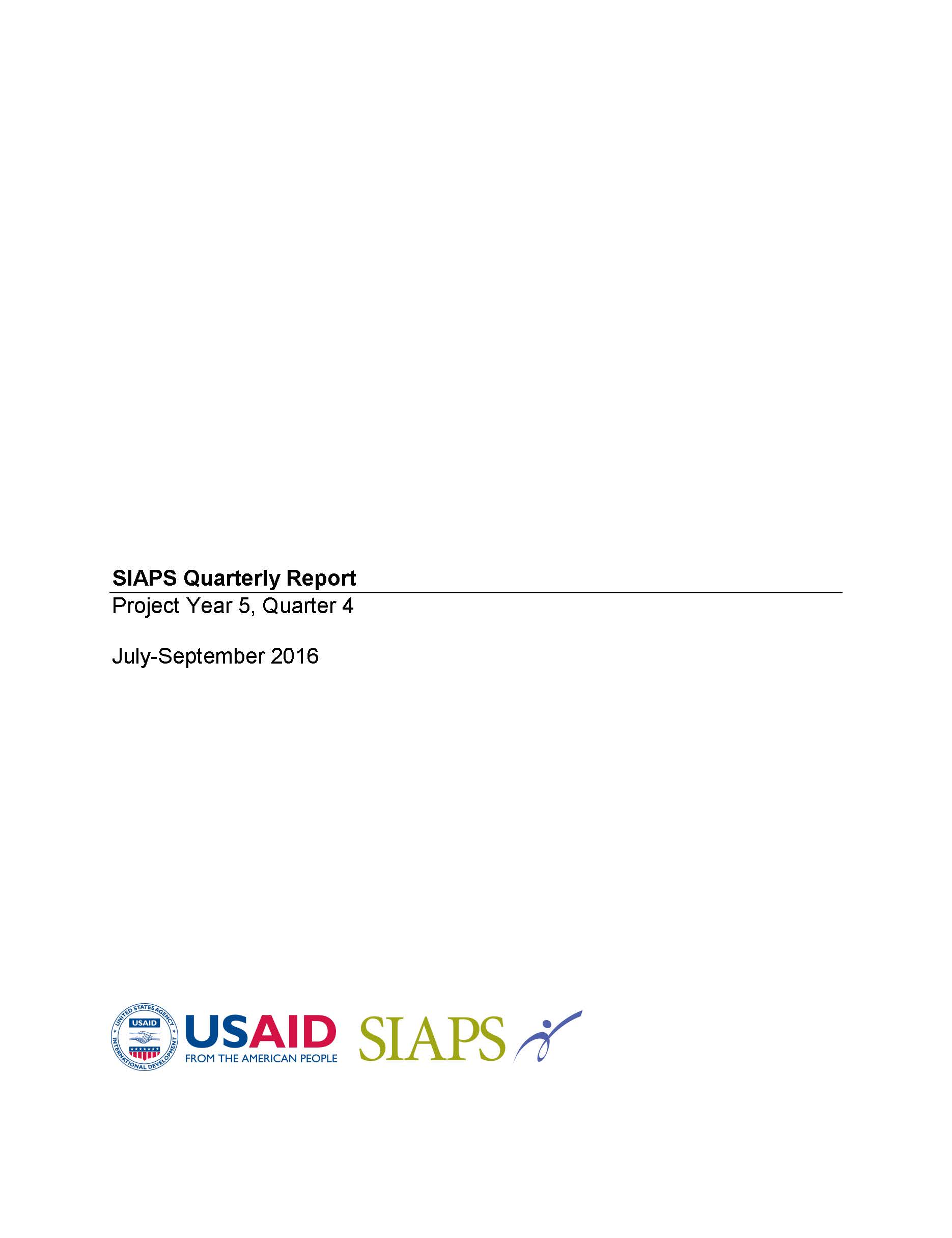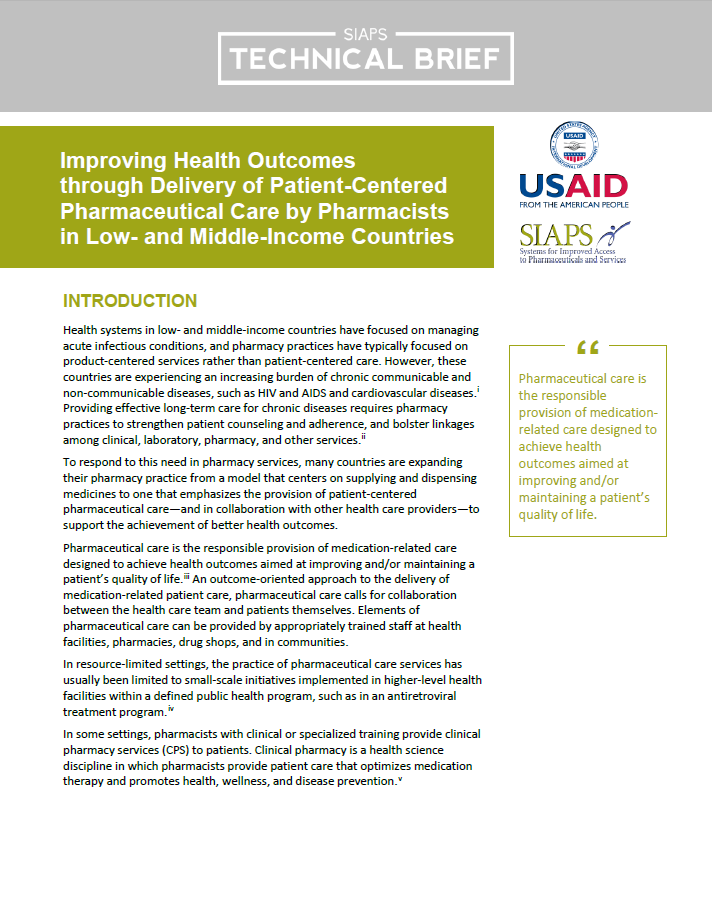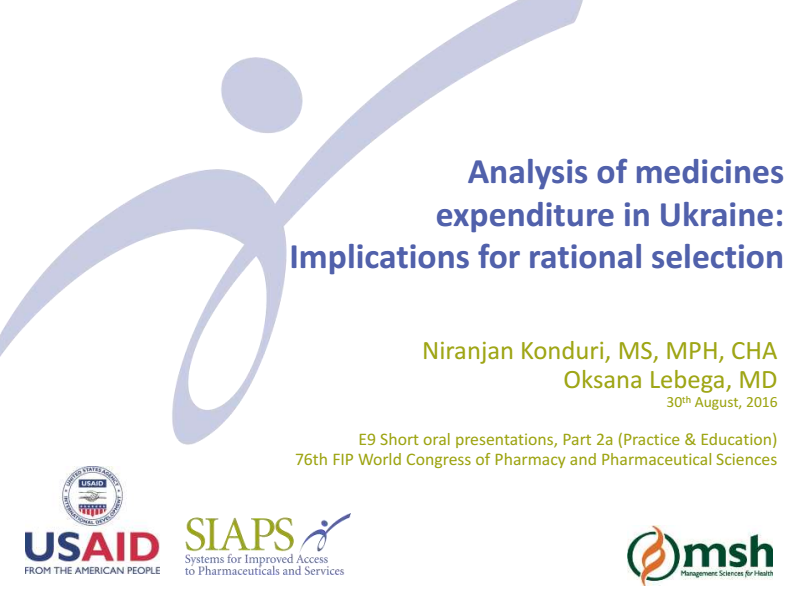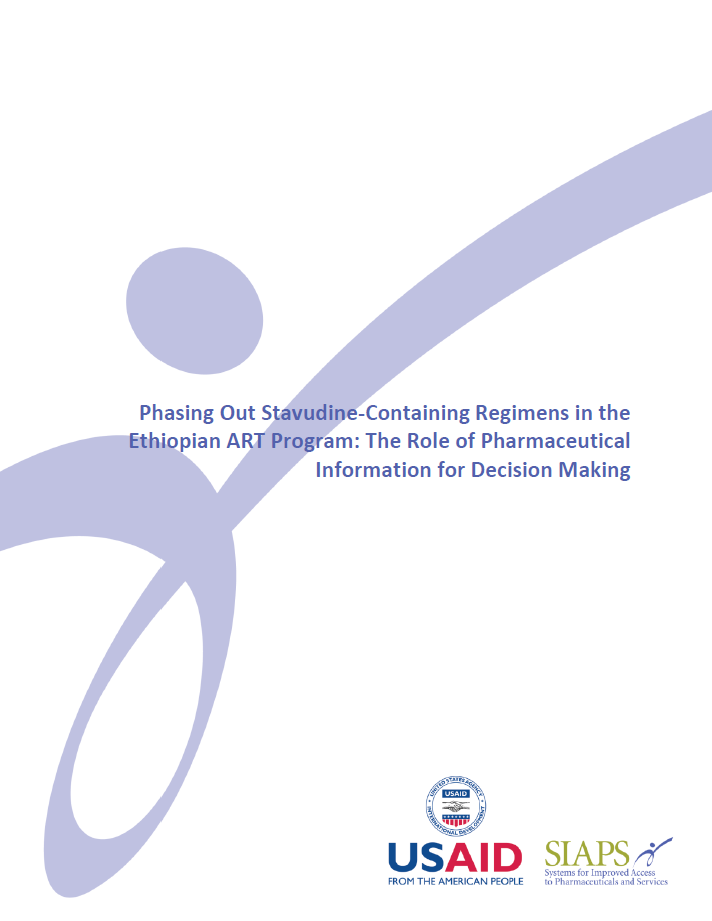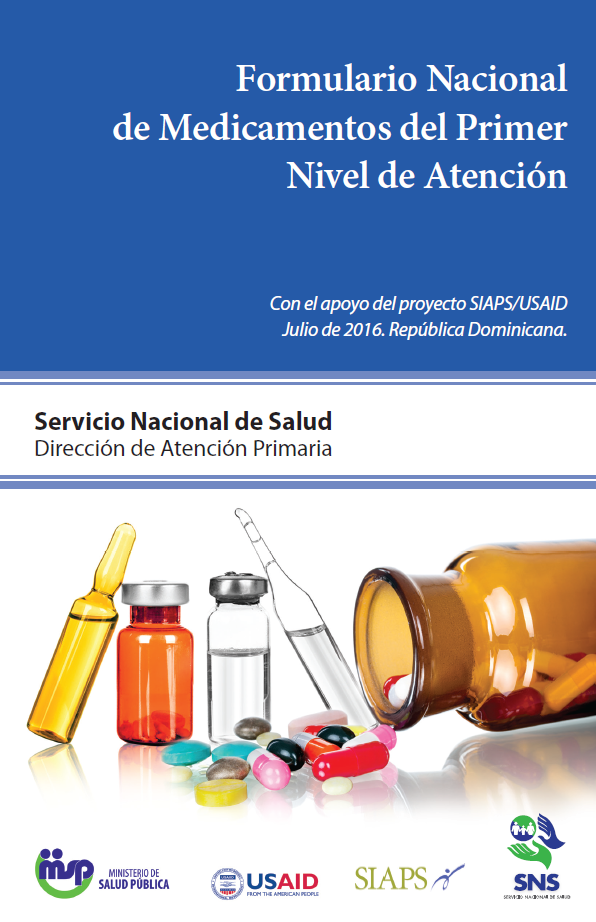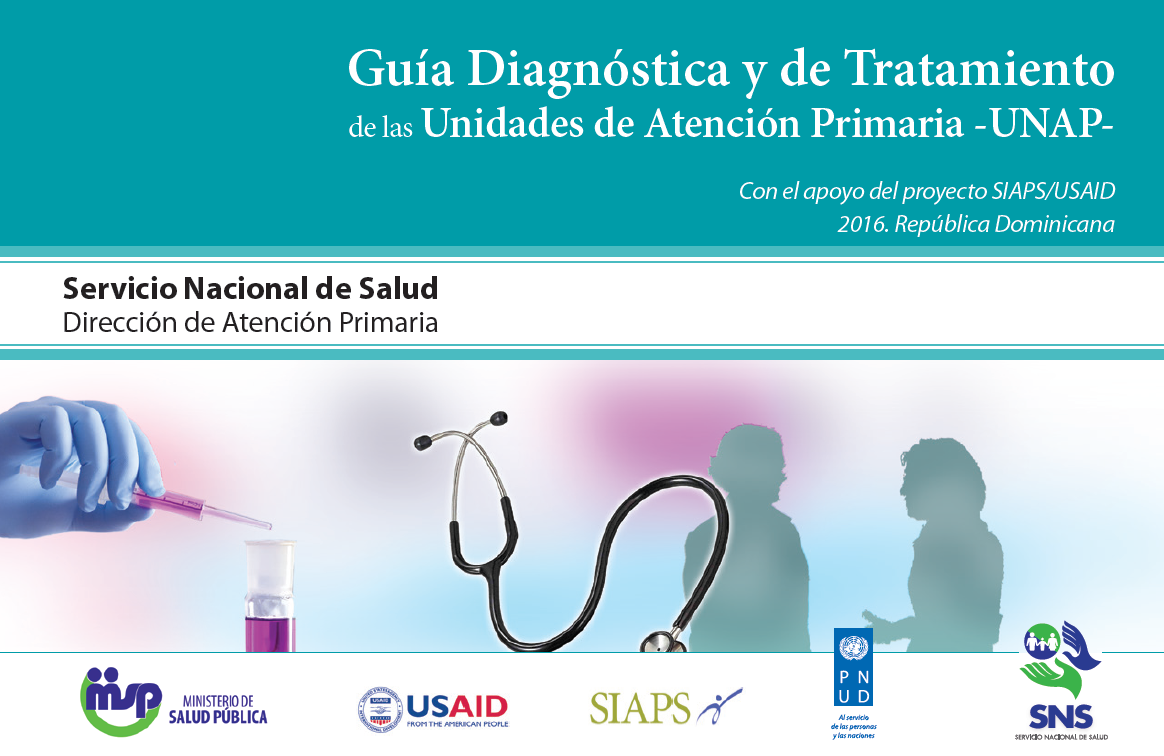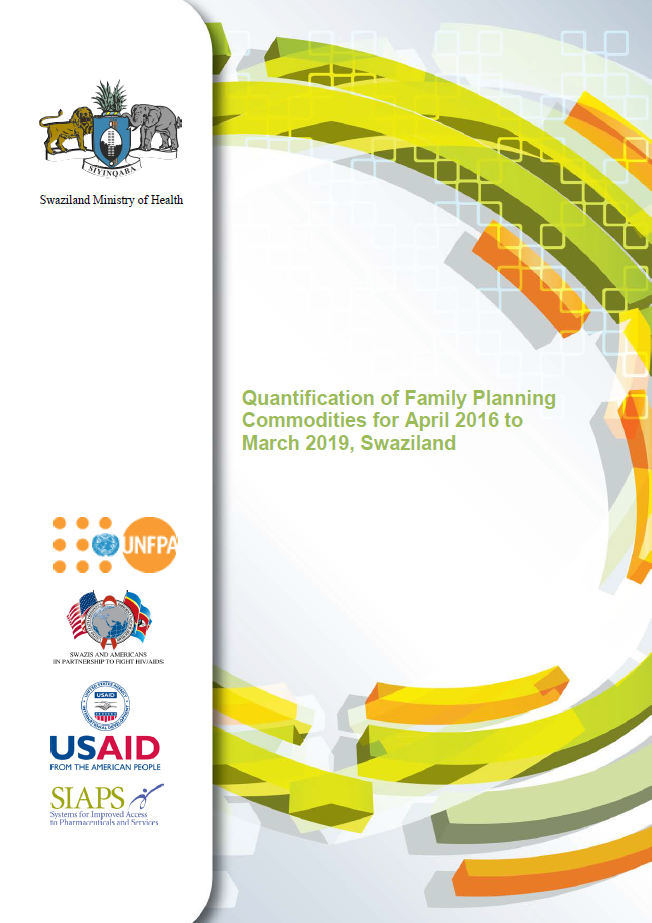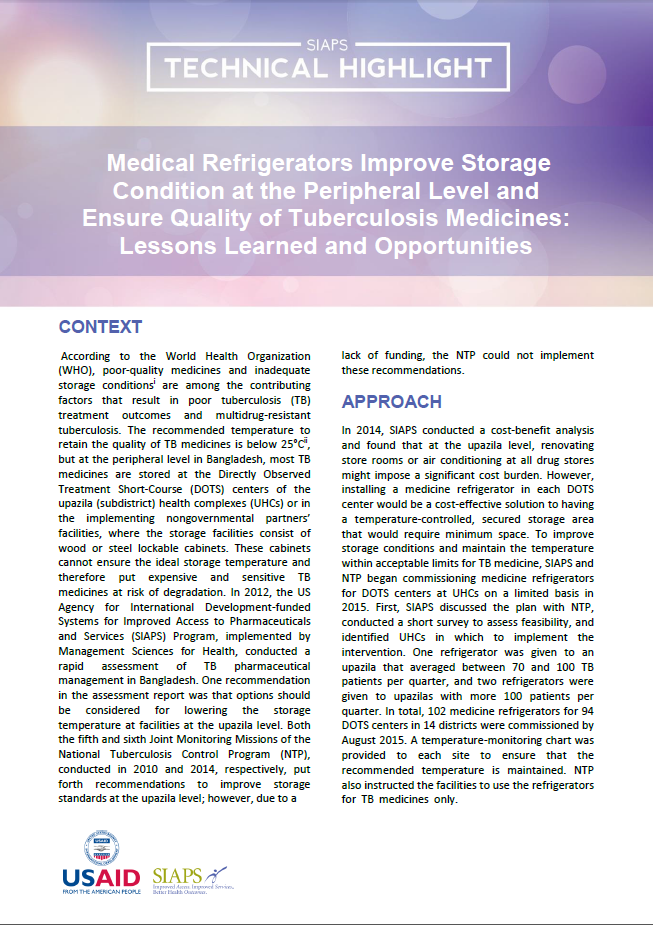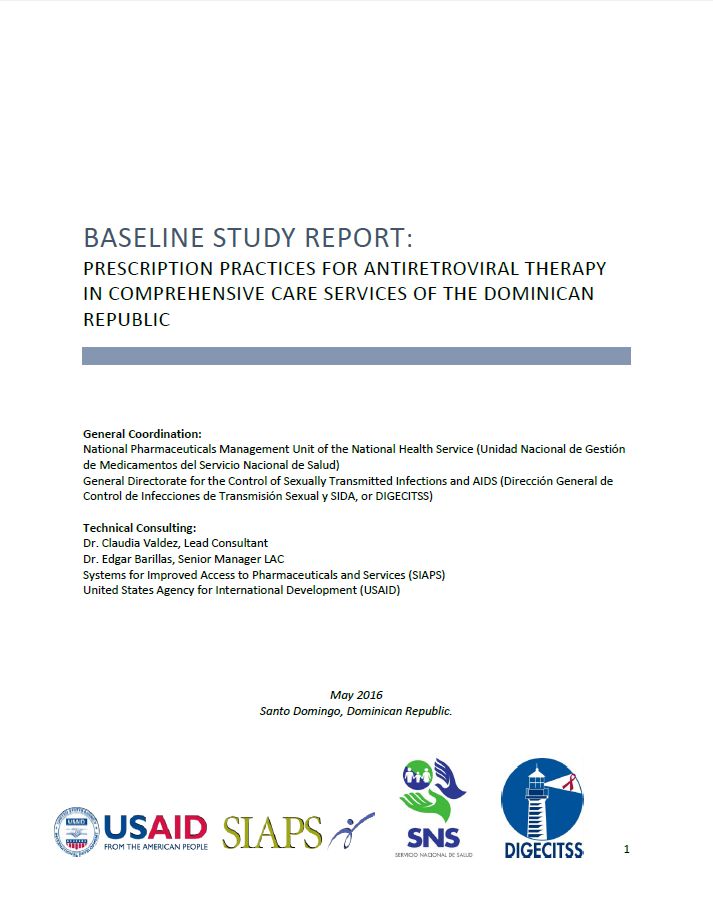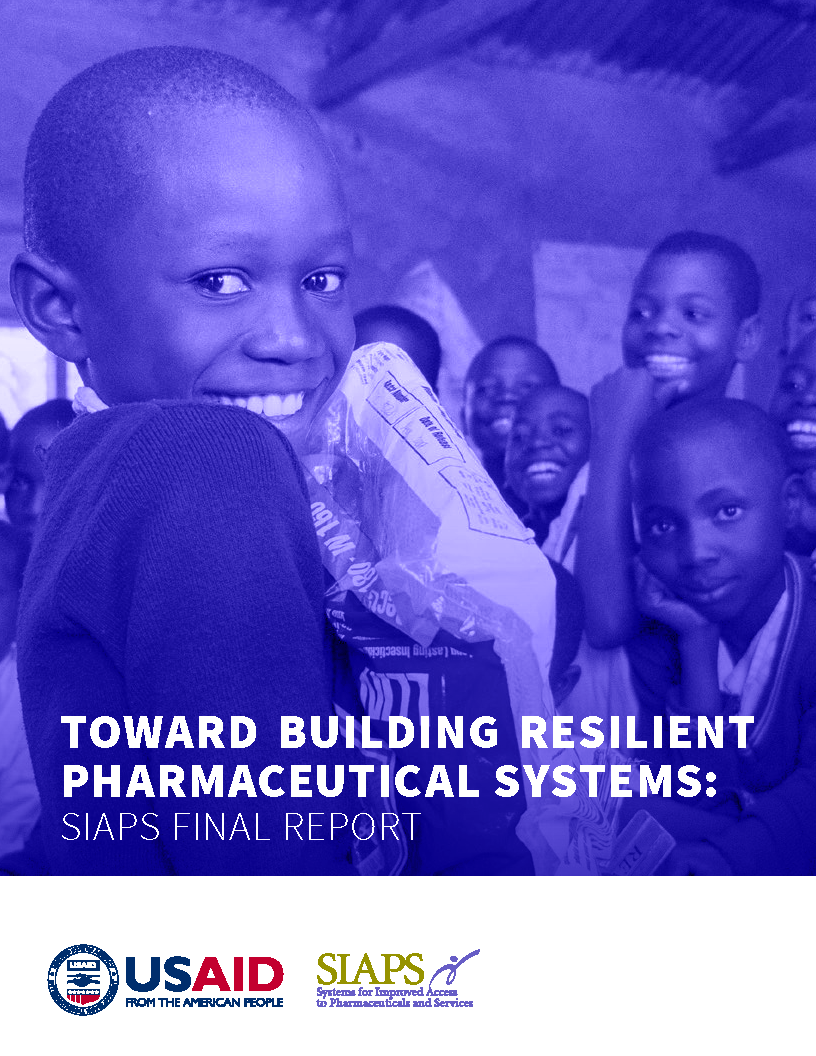This guide provides national stakeholders and advocates with information and guidance to update the national EML to include a new commodity, a new indication, or a new formulation based on the available evidence and based on country need and disease burden. While the actors, timeline, and process may vary from country to country, this guide … Read more
This report presents highlights of SIAPS’ activities organized both by intermediate result area, representing multiple countries where we work, as well as by our global, regional, and country portfolios for the July through September 2016 period.
Health systems in low- and middle-income countries have focused on managing acute infectious conditions, and pharmacy practices have typically focused on product-centered services rather than patient-centered care. However, these countries are experiencing an increasing burden of chronic communicable and non-communicable diseases, such as HIV and AIDS and cardiovascular diseases. Providing effective long-term care for chronic diseases requires pharmacy practices to strengthen … Read more
Konduri N, Lebega O. Analysis of medicines expenditure in ukraine: Implications for rational selection. E9 Short oral presentation, Part 2a (Practice & Education) at the 76th FIP World Congress of Pharmacy and Pharmaceutical Sciences 2016, Buenos Aires, Argentina. August 30, 2016.
This was a descriptive retrospective study that used secondary data collected from ART service pharmacies’ routine reports. The reports contained the patient’s medication profiles on specific type of regimen. All first- and second-line regimens are captured by the reports. The study used data and reports from September 2012 to September 2014. About 205,832 patients were … Read more
capacity building, Drug Information Service, E Ejigu, E Geremew, E Rutta, Ethiopia, H Tadeg, HIV/AIDS, M Alemayehu, Supervision, Technical Report, Y Yiegezu
La República Dominicana inicio en el año 1997 el proceso de reforma y modernización del sector salud, cuyos principios fundamentales descansan en la calidad, integridad de las acciones de salud, expansión y cobertura universal, separación de funciones para la equidad en el acceso y una mayor eficiencia de los recursos. En el 2005 se presenta la Política Farmacéutica … Read more
El Servicio Nacional de Salud (SNS), creado mediante la Ley 123-15 de fecha 16 de julio del 2015, tiene como una de sus prioridades ampliar la cobertura, mejorar el acceso, la calidad y la capacidad resolutiva de los servicios de salud en el primer nivel de atención, definidos como puerta de entrada al Sistema de Salud de … Read more
A family planning quantification exercise was conducted with technical assistance from SIAPS and participation of all major stakeholders. The objective was to produce a forecast and supply plan for the period April 2016–March 2019. The results of this quantification exercise will be used to plan, mobilize, and secure financial resources for the quantification period. The … Read more
According to the World Health Organization (WHO), poor-quality medicines and inadequate storage conditions are among the contributing factors that result in poor tuberculosis (TB) treatment outcomes and multidrug-resistant tuberculosis. The recommended temperature to retain the quality of TB medicines is below 25°C, but at the peripheral level in Bangladesh, most TB medicines are stored at … Read more
The purpose of this study is to determine if the current prescription practices adhere to the national therapeutic guidelines. Finding notable discrepancies between the prescription practices and the guidelines would explain unjustified expenses in ARV therapy and the stockout problems and overstocks that occasionally occur.
